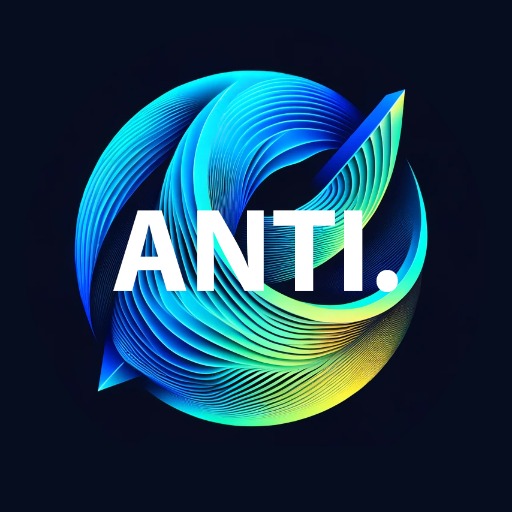6 Thinking Caps-decision-making framework using six perspectives
AI-powered thinking framework for better decisions
Start Here: Explore my question from six angles
I want to learn how to make a GPT
Related Tools
Load More
Creative Answers & Brainstorm GPT
4.5 ★ The most creative answers GPT4o can make. ⚠️ You can skip all reasoning and just read the final part. ⚠️ P.S. If any ideas you don't like, it's important to tell GPT why and point them out

Brainstorming: Six Thinking Hats
Based on the Six Thinking Hats methodology, this GPT offers diverse, expert insights by embodying six unique decision-making personas (Hats).
思考问题六角度
这是李继刚(即刻同名)创建的用于从六个角度来思考问题的 Bot。你可以提出一个当下遇到的问题, 试试这六个思考角度对你是不是有所启发。

My Think Tank
Your personal council of wisdom, guiding you like an emperor or president through the world of endless possibilities

Critical Thinking Meter Pro
A critical thinking game based on Halpern's theory, providing feedback and scores, to improve your thinking skills.

MentalModelsGPT
GPT teached using a mental models
20.0 / 5 (200 votes)
Introduction to 6 Thinking Caps
6 Thinking Caps is a problem-solving and decision-making tool based on Edward de Bono’s Six Thinking Hats method. It is designed to help individuals and teams approach situations from multiple perspectives to enhance creativity, critical thinking, and structured decision-making. The core concept involves six different 'hats,' each representing a specific type of thinking: data-driven analysis (White Hat), emotions (Red Hat), caution (Black Hat), optimism (Yellow Hat), creative solutions (Green Hat), and process control (Blue Hat). By metaphorically wearing these hats one at a time, individuals or teams can shift their thinking modes and explore different angles of a problem. For example, in a brainstorming session, someone might first focus on gathering facts and data under the White Hat, then move to express emotional concerns with the Red Hat. This sequential approach can prevent the conversation from becoming chaotic or one-sided, leading to more balanced, thoughtful decisions.

Main Functions of 6 Thinking Caps
Structured Decision-Making
Example
In a corporate board meeting, a team might need to decide whether to invest in a new product. The team first gathers all relevant data under the White Hat (sales forecasts, market research), then moves to the Black Hat to discuss risks (possible loss, market competition), before using the Yellow Hat to explore potential benefits (new revenue streams, market expansion).
Scenario
A team tasked with determining whether to launch a new product line uses 6 Thinking Caps to break down the decision. By moving through each 'hat,' they can comprehensively analyze the market data, risks, emotional impact, creative opportunities, and procedural considerations.
Enhancing Creative Problem-Solving
Example
In a marketing team tasked with developing a new campaign, the team might wear the Green Hat to focus on generating creative ideas, such as unconventional advertising methods. Once the brainstorming is done, they can shift to the Black Hat to critically evaluate the feasibility of each idea.
Scenario
A marketing team is struggling to come up with fresh ideas for a campaign. Using the Green Hat, they focus solely on creativity without judgment, generating a list of wild and innovative concepts. Once they have a pool of ideas, they switch to the Black Hat to critically assess which ideas are realistic within budget constraints.
Balancing Emotional Responses
Example
In a project management scenario, the Red Hat might be used to allow team members to express any concerns or anxieties they feel about an upcoming deadline. This provides a space for emotions to be openly acknowledged, preventing them from influencing other aspects of the decision-making process.
Scenario
A software development team faces mounting pressure from an impending deadline. During a meeting, the Red Hat is used to give each team member space to voice personal stress or apprehensions. After emotional concerns are aired, the group can return to more objective problem-solving under the White and Black Hats.
Ideal Users of 6 Thinking Caps
Corporate Teams and Leaders
Corporate leaders and teams in industries like technology, marketing, and finance can greatly benefit from 6 Thinking Caps. This method helps these groups break down complex decisions into more manageable pieces, ensuring that no single perspective dominates. For instance, when launching a new product, teams can methodically weigh facts, risks, creative approaches, and emotional reactions to reach a well-rounded decision. Leaders benefit from this structured process as it fosters team collaboration and encourages different perspectives.
Educational Institutions and Students
Educational professionals, including teachers and students, can use 6 Thinking Caps to improve learning experiences and decision-making. Teachers might apply it in classrooms to help students tackle problems from various angles, encouraging critical thinking and creativity. For instance, in a debate or group project, students can take turns 'wearing' different hats to argue from a factual, emotional, or creative standpoint, learning to appreciate diverse approaches to problem-solving.

How to Use 6 Thinking Caps
Step 1
Visit aichatonline.org for a free trial without login, no need for ChatGPT Plus. This allows you to try the tool and explore its functionality without any barriers.
Step 2
Define the problem or decision you're addressing. Clearly stating the issue helps in using the Six Hats method effectively to explore all aspects of the problem.
Step 3
Assign roles or sequence of thinking hats. Each of the six hats represents a different thinking perspective: facts, emotions, caution, benefits, creativity, and control. Use these hats in the correct order based on your goal.
Step 4
Analyze the problem through the lenses of each hat. Approach the problem by wearing one hat at a time, systematically exploring each perspective, whether it be factual, emotional, critical, or creative.
Step 5
Conclude with the Blue Hat (Control) to summarize the findings, make decisions, and outline actionable steps based on the insights gained from each thinking hat.
Try other advanced and practical GPTs
Notion Template Creator
AI-powered customization for Notion templates

Systems Mapper
AI-powered tool for system mapping.

Mini Saurus Creator
Create charming dino characters with AI.

The Infinite Jester
Craft unique visuals with AI-powered prompts.

Function Analysis
AI-powered tool for system function analysis.

GPT 4 Prompt Improvement
AI-powered prompt refinement for detailed responses.

Power Assistant
AI-powered platform for enhanced productivity

PlaylistGPT
AI-powered music curation for your playlist needs

Math Teacher
AI-powered math assistance and learning

葛城ミサト
AI-powered roleplay, guidance, and entertainment.

Recipe Generator
Innovative Recipes with AI Precision

Quest Scribe: Fantasy Adventure
AI-powered quest master for fantasy adventures

- Problem Solving
- Business Strategy
- Decision Making
- Creative Thinking
- Group Discussions
Common Questions about 6 Thinking Caps
What are the 6 Thinking Hats?
The 6 Thinking Hats are a decision-making framework by Edward de Bono that encourages thinking from six distinct perspectives: White (facts), Red (emotions), Black (caution), Yellow (optimism), Green (creativity), and Blue (process control).
How do I apply the Six Hats in business?
In business, you can use the Six Hats during meetings, brainstorming sessions, or decision-making processes. Each hat helps you focus on a specific aspect of the issue, promoting balanced and well-rounded decisions.
Can I use the 6 Thinking Hats for personal decisions?
Yes, the framework can be applied to personal decisions, helping you explore both logical and emotional sides of the situation, weighing risks and rewards, and considering creative alternatives before making a decision.
Is there a set order for using the hats?
While there is no strict order, it’s common to start with the White Hat (facts) and end with the Blue Hat (control of thinking). You can adjust the sequence based on the type of decision you are making.
What is the benefit of using the Six Hats method?
The benefit is structured, comprehensive thinking that avoids groupthink, encourages creativity, and ensures that all relevant aspects of a problem are considered, leading to better decision-making.